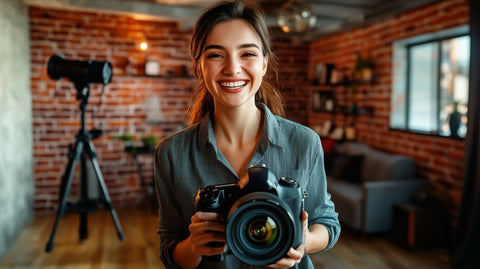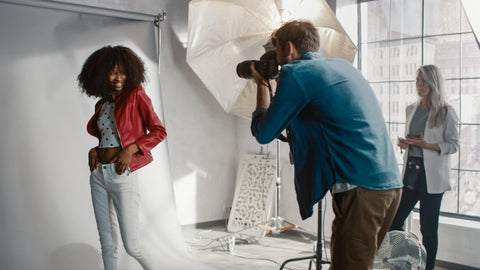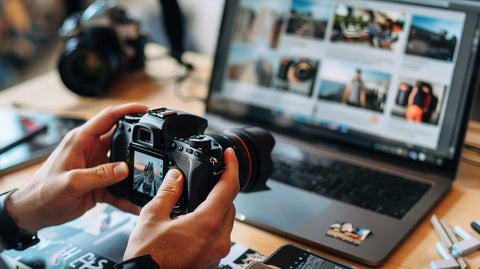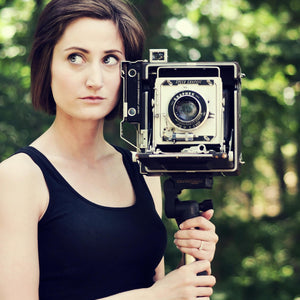- Lightroom Presets
- Mobile Presets
-
Photoshop
-
Learn
-
Support
-
Install
- Best Sellers
- Blog
By Anna Gay on | No Comments

One question that I am often asked by new photographers and a question that we have been asked here in our online community is “how does a person develop a successful photography career?”
Needless to say, this question has an infinite amount of answers and an infinite amount of variables. I’ll do my best to unpack this question based on my own experience, as well as the experience of my colleagues in the photography sphere.

Defining your idea of success early-on will help you set goals, and take steps towards achieving them. The word “success” will be different for everyone. For some, success may come in the form of being a full-time photographer, while success for others may involve keeping their “day job” and doing photography part-time, on the side.

Having a main, overall, big-picture goal in mind for your career as a photographer is a great practice, but for me, personally, I’ve found that having smaller, short-term goals is crucial in the great scheme of things.
Having small goals keeps you inspired and motivated because they can be achieved fairly quickly with enough work. If you don’t have small goals to achieve, you run the risk of getting discouraged and feeling like you aren’t doing enough with your photography. When I start to feel like I’m “going nowhere” (I’ve used that phrase a lot over the past few years!) I try to think of one thing I can do at that moment that will help me reach my long-term goal. It can be something as simple as writing down what I can do now. It can be along the lines of learning a new technique for editing or lighting, or something business-related, like sprucing up my business cards or website.

One of the great things about photography is that there are endless opportunities for different types of photographers. For example, you can be a wedding/portrait/event photographer, or you may be more interested in shooting stock photography. The most important thing you can do if you are interested in being a wedding/portrait photographer is networking. Give your card to everyone. Promote your website/Facebook page until you are blue in the face. Have booths at wedding shows. Most importantly, build a solid client base. Achieving success in this arena can often take years, so be persistent and patient.
If you are interested in stock photography, look into the policies of companies such as Getty or Stocksy.
On the other hand, you may be more interested in fine art photography, with having your work shown in galleries being your main objective. If this is where you see yourself fitting in, submit your work to as many calls for submissions as possible. The Society for Photographic Education has an extensive list of open calls.

While freedom of expression is essential with any type of creative work, being informed of current trends is also important. Most of your clients will be drawn to the trends they are seeing on Pinterest, Etsy, and what they see in any number of lifestyle magazines. I encourage you to stay true to your own style, but finding ways to incorporate current trends into your own unique style of photography will help you reach a broader audience.
The same thing goes for galleries. Different galleries are looking for different types of photography, so, if you are interested in showing in galleries, do some research before you start submitting to find the galleries that will be most likely to show your work.

Sometimes, you may find that your goals, and your definition of success, will change over time. Let me tell you this: there is nothing wrong with that!
If, for example, you decide that you do not want to be a full-time wedding photographer, or that you hate the stress of gallery shows, that is totally okay. In fact, if you find yourself in a situation where you can admit that maybe you need to redefine your goals, I think that is healthy. Why waste your time and energy on pursuing a certain type of photography that doesn’t reward you and feed your soul? That probably defeats the purpose of why you got into photography in the first place.
I started off as a portrait photographer. For a while, I really enjoyed it, and had a fair amount of bookings. When I first started my career, I thought that I wanted to be a commercial portrait photographer, but after about two years, I realized that wasn’t where my heart was. I felt more rewarded as a photography instructor, so a lot of my time is now spent teaching – either online or in the classroom. I’m currently in an MFA program with a concentration in photography. If you had told me three years ago that I would be in graduate school for photography, I would have laughed, because it would have been so far-removed from my goal at the time, and the idea of what I thought I wanted to be doing with my photography. However, I feel much more rewarded as a fine art photographer and photography instructor than I did in commercial photography. That’s just me, though, and the way you feel may be the exact opposite.

I think labeling one type of photography as more important than another is dangerous and ridiculous. Every genre of photography is important. Finding the genre of photography that is most rewarding to you, though, is the key.
So, to boil all of that down, here are the main points 1) sometimes your goals may change – that’s okay and 2) you have to try to follow your instincts to do what makes you happiest.




Anna Gay is a portrait photographer based in Athens, GA and the author of the dPS ebook The Art of Self-Portraiture. She also designs actions and textures for Photoshop. When she is not shooting or writing, she enjoys spending time with her husband, and their two cats, Elphie and Fat Cat.

Comments